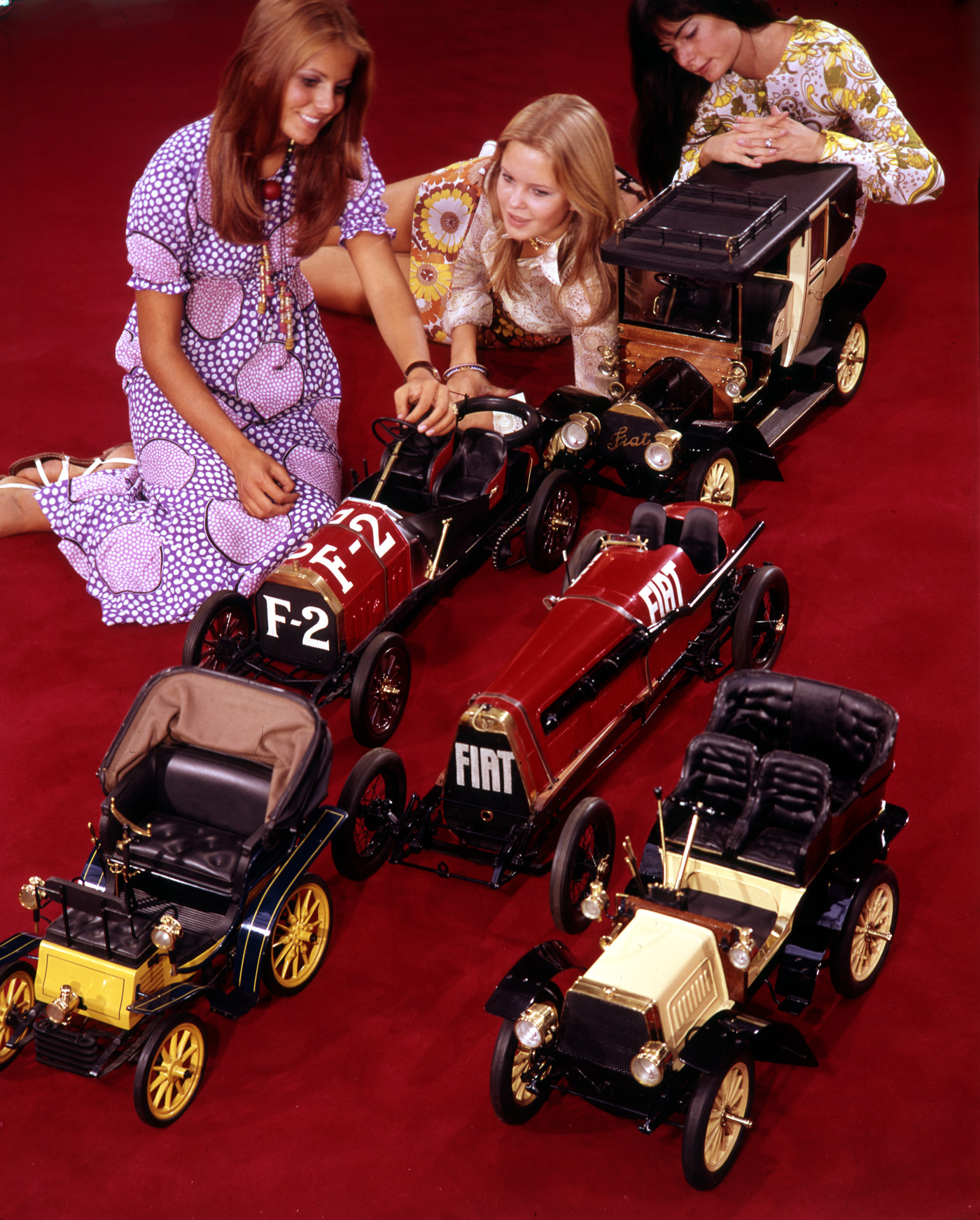
The girls dressed in perfect Eighties style admire a selection of Fiat car models including the Mephistopheles in the 1924 version and the 130 HP racer, winner of the GP de l’ACF 1907, both models by Bruno Reggiani; and (front row, left) the 1899 3 ½ HP, model by Silvio Morselli.
Text by Aldo Zana
Photos by Fiat Centro Storico and Acerbi family
Once upon a time no one even remotely thought about preserving a sample of the cars produced by a factory. Fiat complied with this dominant attitude until the late Thirties, when some managers were stricken by illumination: if we have not saved the originals, why not build scale models?
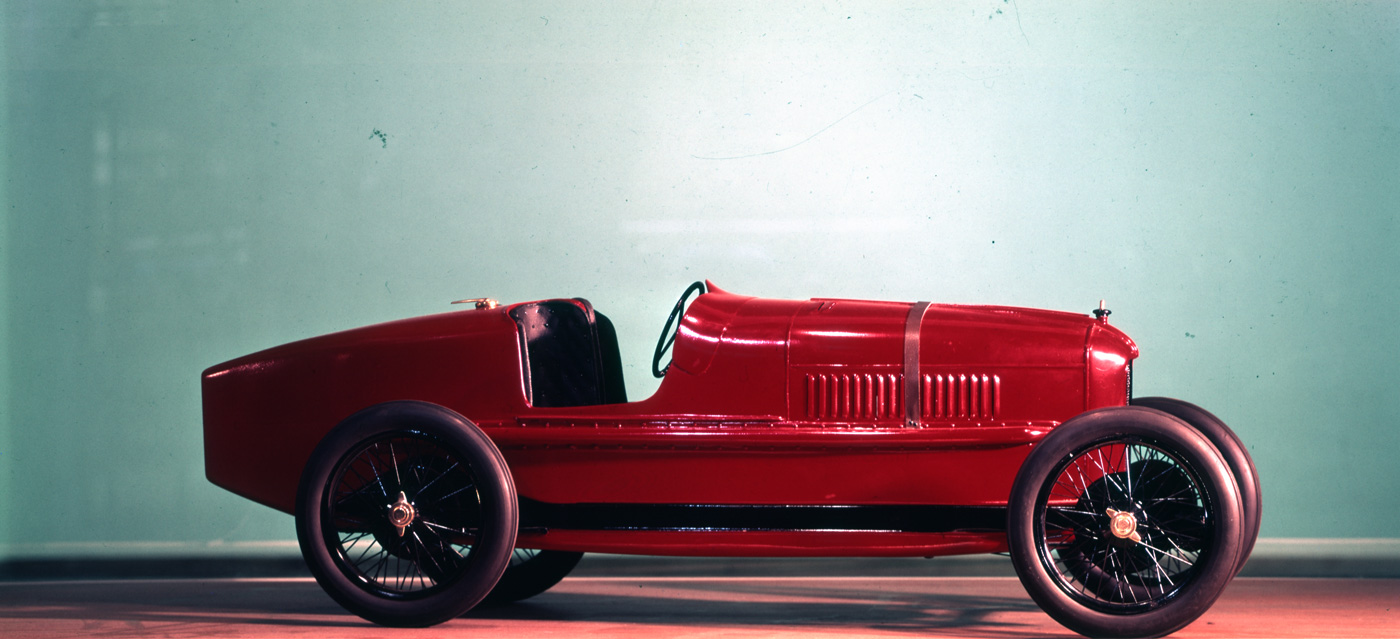
The Tipo 802-805 Grand Prix racer of the early Twenties. Model by Bruno Reggiani. These cars were destroyed on order by Senator Giovanni Agnelli. The model is the only three-dimensional reference left of the originals.
This model making activity endured through the early Eighties of the last century and led to the creation of one of the industry’s largest collections of large-scale models in the world. Most of the models are still on display at the Fiat Centro Storico (the company’s historical car collection and archives) at via Chiabrera 20, in Turin, located in one of Fiat’s early 20th Century main facilities, now skillfully refurbished and repurposed as a car museum.
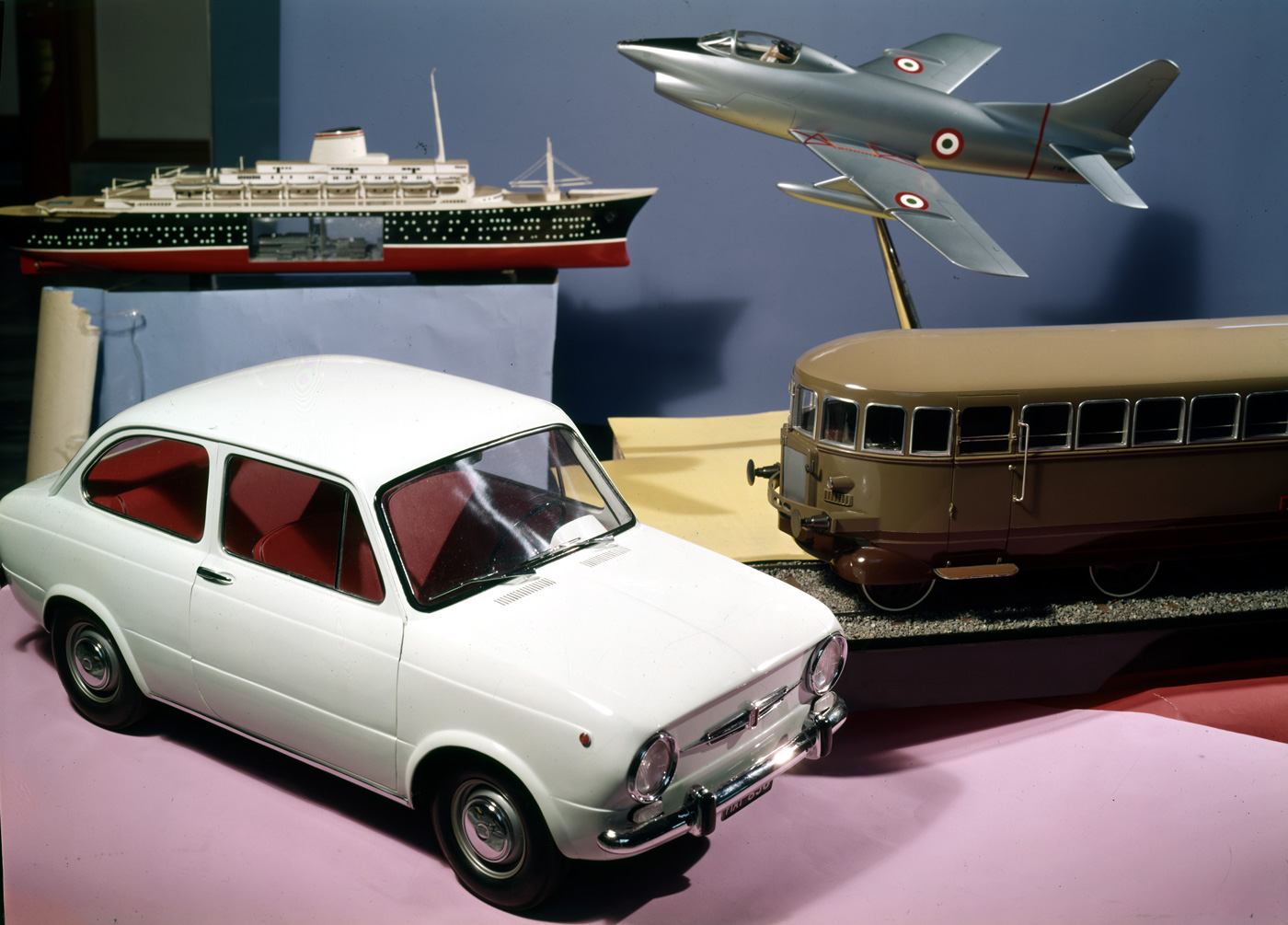
A sample of what Fiat meant in the Fifties and Sixties: Terra Mare Cielo, i.e. Land Sea Sky. The model car is the 850 saloon presented in 1964; the aicraft is the prototype of the G.91 small fighters, winner of a NATO concours in 1958; the ship is the Italian transatlantic liner “Cristoforo Colombo” launched in 1953, whose power plant was made by Fiat; the DMU is the ALn 56, widely used by the Italian State Railways in the Fifties and Sixties.
A hundred-plus Fiat scale model vehicles were built over the years. They reproduced cars, buses, lorries, tractors, aircrafts, ships, diesel-propelled railcars and encompassed the entire range of the Fiat product line, echoing Fiat’s claim to produce transportation for the “Terra Mare Cielo” (Earth, Sea, Sky).
The collection presents the early Fiat cars as well as the newly introduced models up to the Eighties. While the models built of the early cars were meant to fill the gaps in the history of the company, the later models were built as promotional items to be displayed by dealers and subsidiaries.
Most of the model cars are in 1:5 scale – an imposing size, asking for top class modeling and detailing skills. The orders stated the use of metal as the basic material because they had to be built to last. As a consequence, the bodies over a strong metal frame were usually shaped from aluminum sheets beaten on a wooden buck. Skilled panel beaters from the Turin carrozzerie connected with a select group of professional modelers to create these masterpieces which never were marketed or advertised.
The reproduction of the 1934 Balilla Coppa d’Oro open roadster was modeled by one of the greatest artists in the trade, Manuel Olive-Sans. The model is the only one in the smaller 1:20 scale, as are other masterworks of the late Spanish artist.
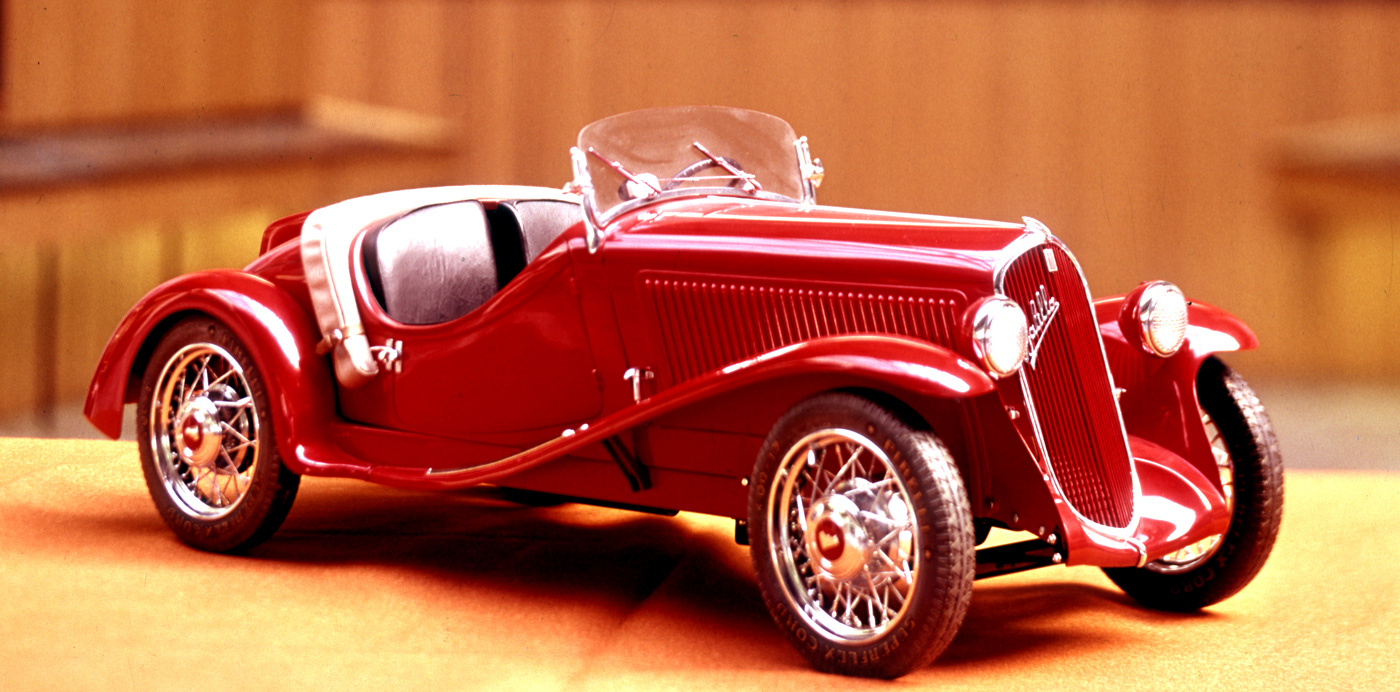
Tipo 508 Coppa d’Oro, the only model in 1:20 scale, a masterwork of the Spanish artist Manuel Olivé-Sans.
The main supplier of the large-scale models was Bruno Reggiani, a Turin-based professional modeler born 1927. In 15 years of work he devoted 800 to 1,000 hours to crafting each model for Fiat. He was also in charge of their maintenance, as some were returned in damaged condition from short-term loans outside the Centro Storico.
Rubber tires cannot withstand the typical 40 lbs. weight of a 1:50 scale model. Reggiani therefore turned to plexiglas, painted black; they remain in perfect shape after so many years. His main job was the reproduction of the racing cars destroyed in 1927 by order of Senator Agnelli. They remain the sole three-dimensional proof left of their existence. Reggiani’s list widened to other racing cars, including the land speed record car “Mephistopheles”, driven by Ernest Eldridge at 146.01 mph in 1924. The original car was later retrieved and restored by Fiat, many years after the model had been ordered. It is today on display in the Centro Storico.
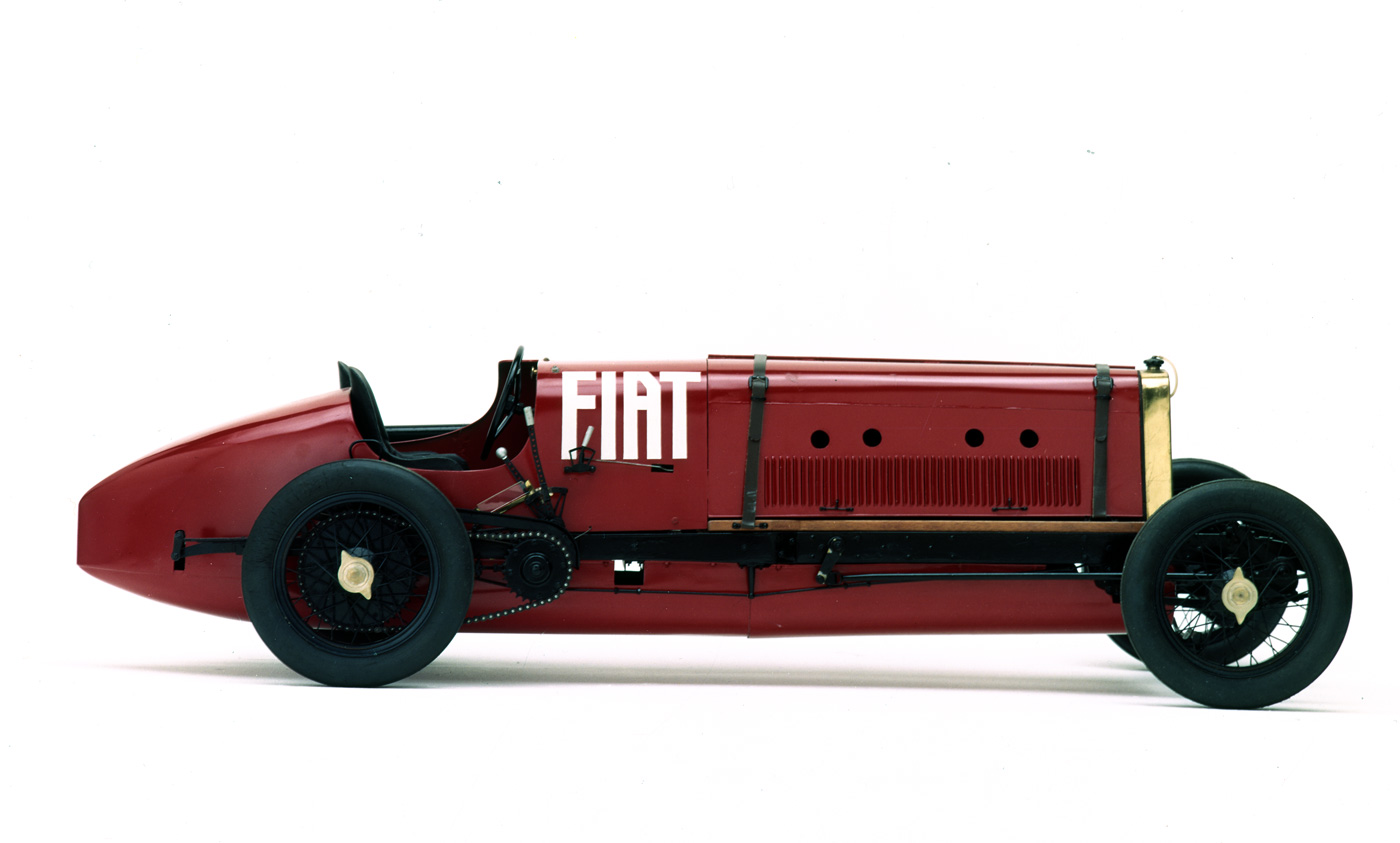
Mephistopheles as raced by Ernest Eldridge when he won the land speed record on the Arpajon (France) public road on July 12, 1924 with a speed of 146.012 mph.
The craftsman of the X 1/9 and 1100 Colonial 1:5 reproductions, as well as a Turin trolley bus in 1:10 scale, was Sergio Abrami, born 1927 in Trieste. Contemporary cars of the Fifties were modeled by Piero Ferré in his workshop north of Milano. He was also the creator of many wonderful models of the Fiat aircraft, completed with the scale frame showing through the transparent skin. He was also the builder of the 1913 Fiat Zero.

1911 Zero type, 1:5 scale model by Piero Ferrè. It is the only one built in three units: one for Fiat, one went to the Turin National Automotive Museum and the third to a private collection in France.
Silvio Morselli, working near Turin, delivered his first model in 1962, the 3.5 HP, the very first Fiat produced in 1899. He then moved on to build model buses, the reproductions of the 24 HP 1902 racing car and the well-known 130 HP Grand Prix “F2” from 1907. Alas, he had only a short spell of work for the Centro Storico due to his early death. Enrico Acerbi, born 1925, was also briefly active in the craft, creating a few scale models in the late Sixties in his workshop in Aosta. He built six models in the regular 1:5 scale, including the contemporary 1300/1500 saloon, the 8 HP 1901, the 508 “Balilla” saloon and the 500 “Giardiniera”, a small woody from the Fifties.
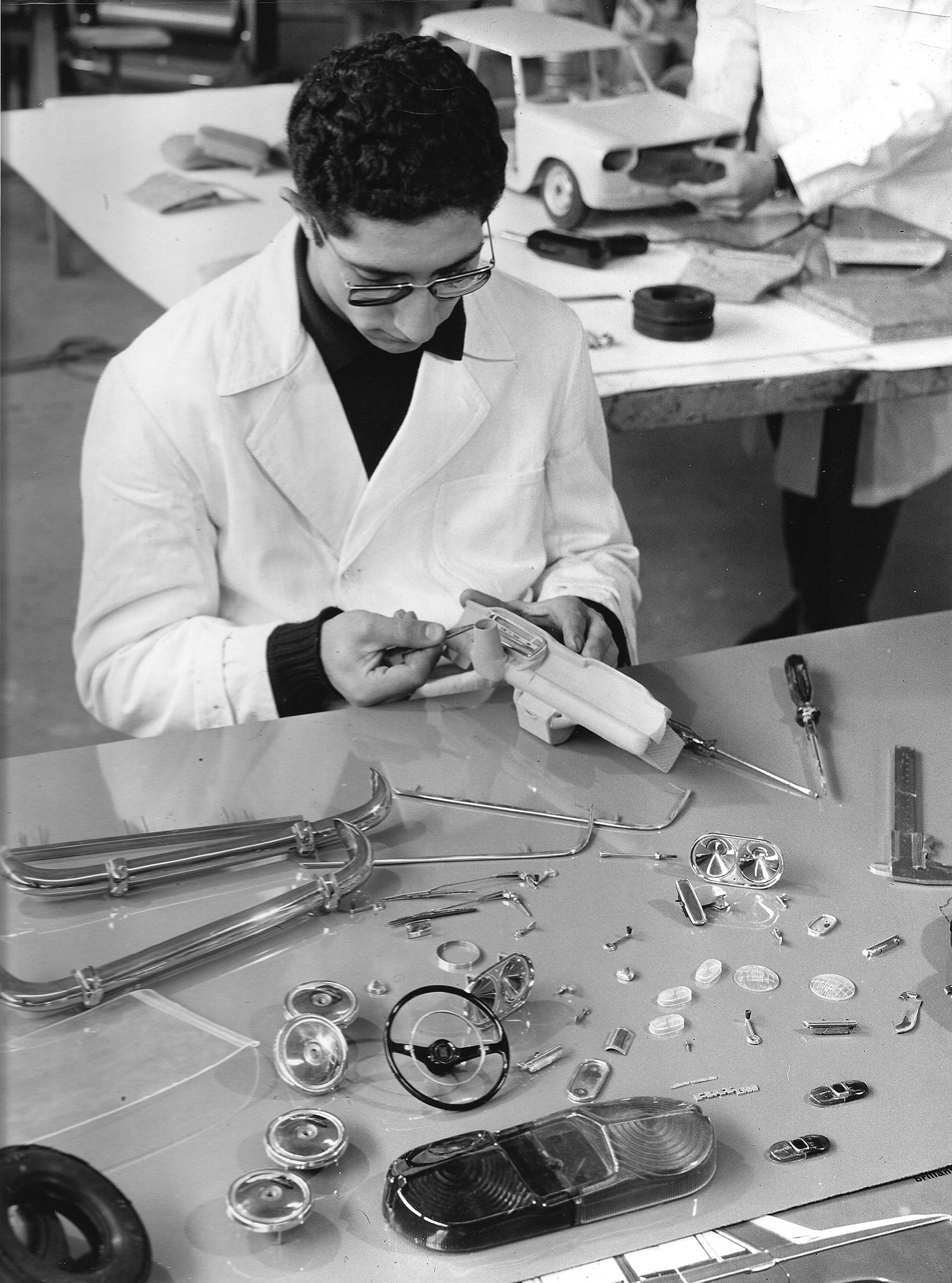
The Enrico Acerbi workshop in Aosta. He built the models using newer materials, including fiberglass and molded resins.
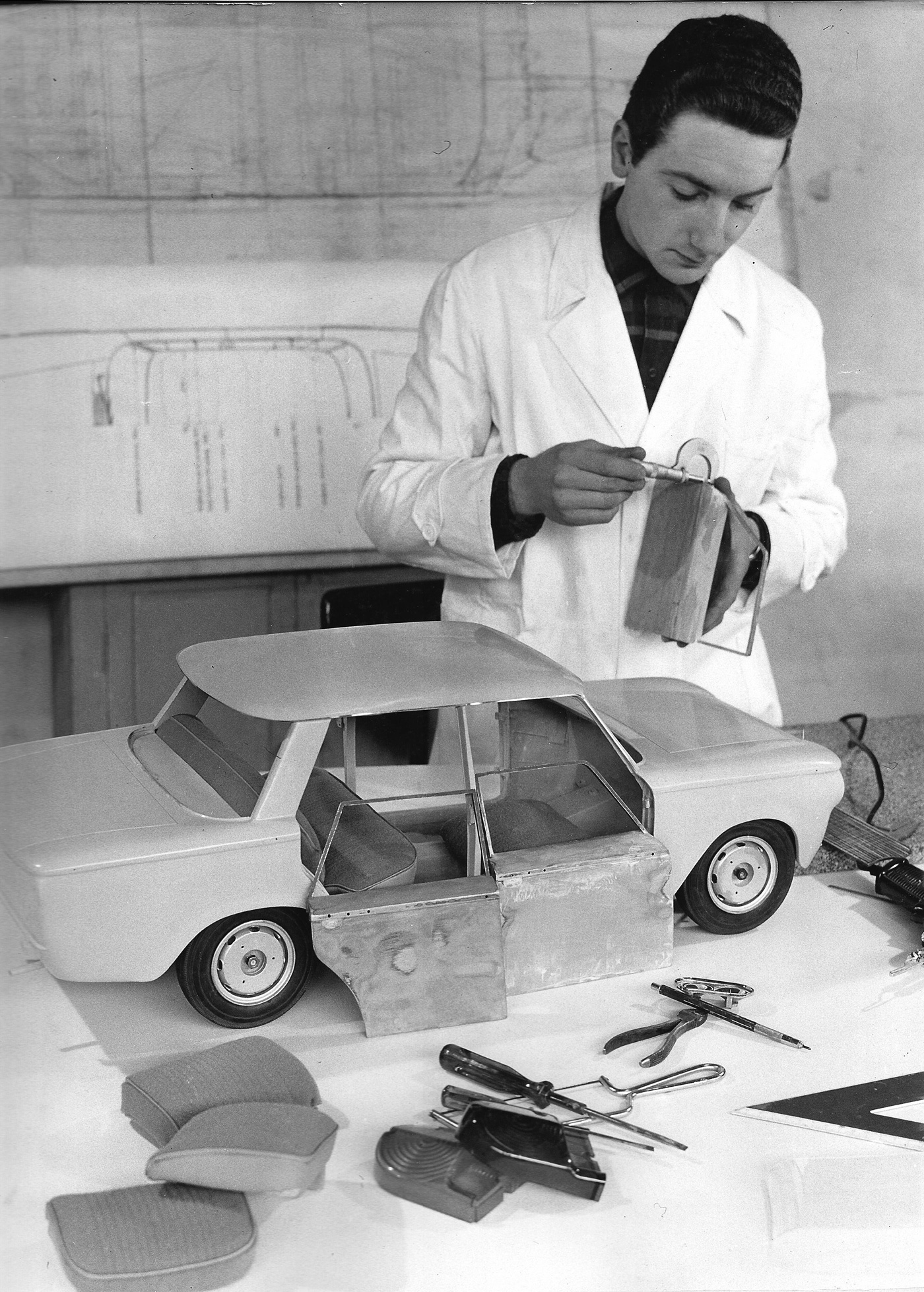
The 1300/1500 saloon model in the production process at the Acerbi workshop. The model of a contemporary vehicle was aimed at dealer’s showrooms.
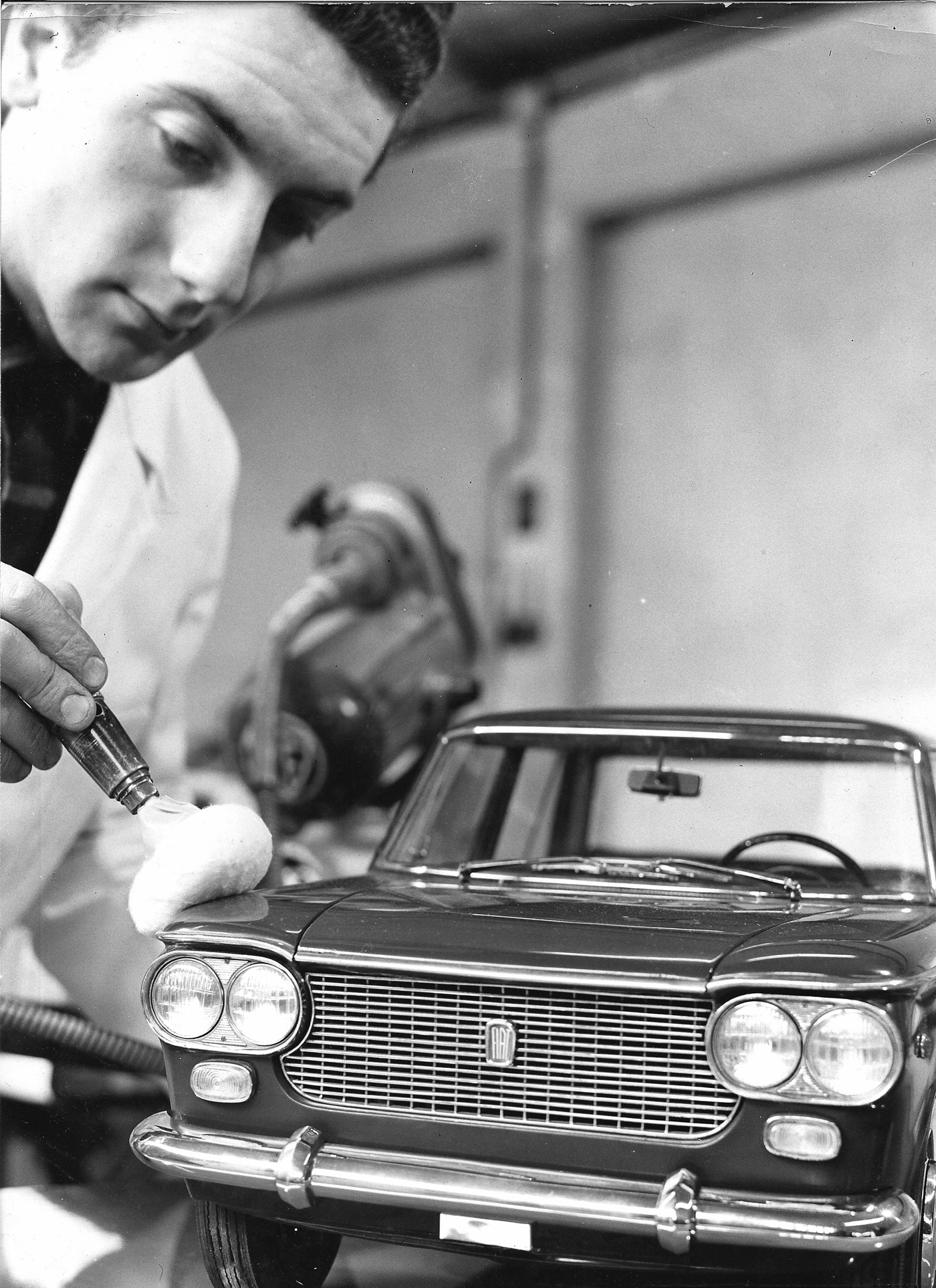
Final polishing work on the painting of the 1300/1500 saloon model in the Acerbi workshop. The imposing size and the fine detail of the model can be easily understood.
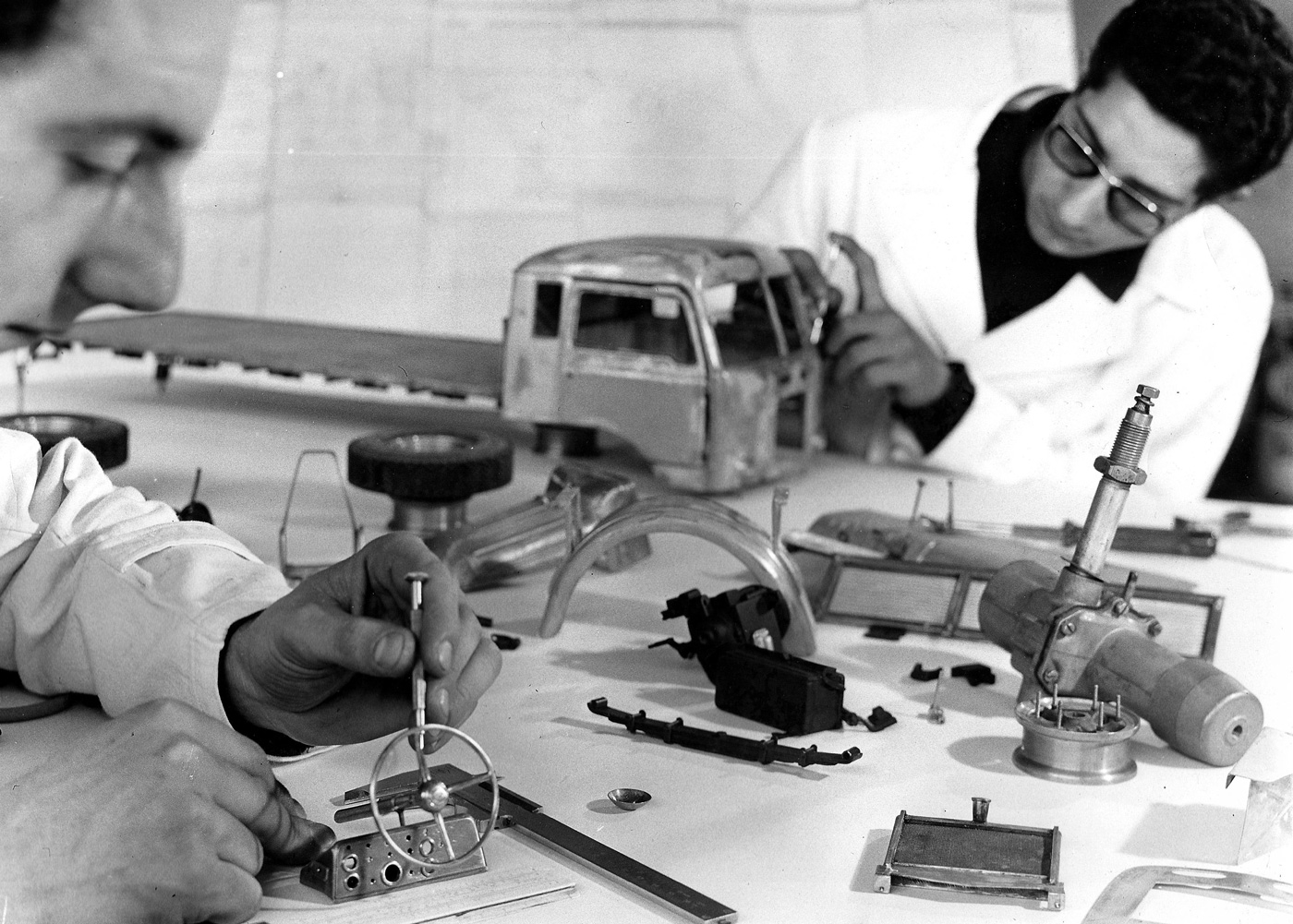
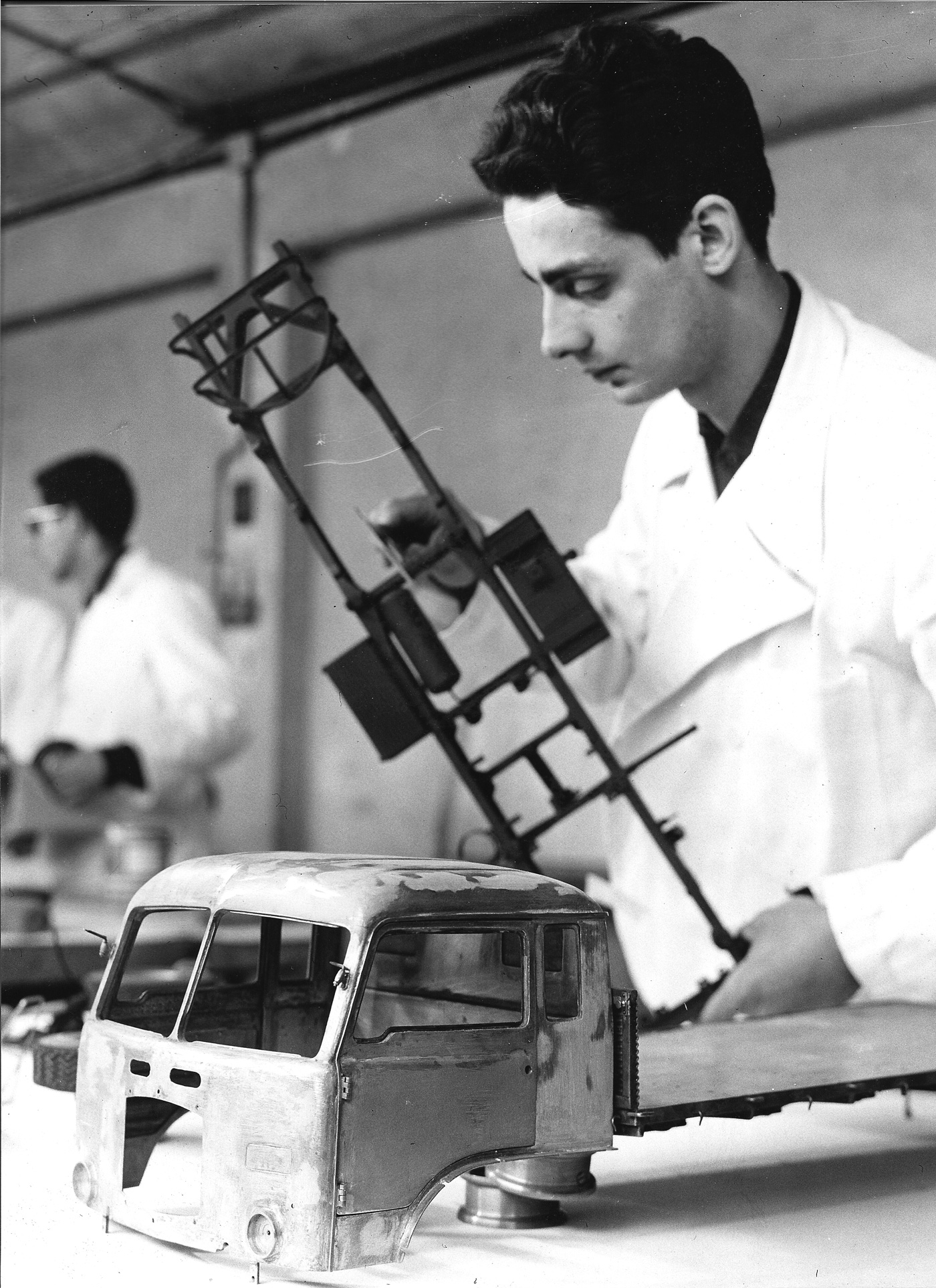
Is Aldo Zana the Aldo Zana I have worked with back in 60s in Italian magazine
Modelli in Euope?
If so would it be possible to have his email address to contact him and say hello!
Sincerely,
Jerry J. Broz
“perfect Eighties style “? Not unless fashion was VASTLY different in Italy from the rest of the world in the 1980s. Those look like 1960s or early 70s dresses and hairstyles.
@Jerry J. Broz
I guess so
It appears that the photo of the Tipo 508 Coppa d’Oro model built by Manuel Olivé-Sans is actually the much larger 1:5 scale model he was commissioned to build for Fiat – NOT a small 1:20 model.
I was Olivé’s agent for 10 years, which were the last 10 years of his career before he passed away in 1995. During those years I spent a lot of time with him at his home & workshop in Barcelona, and also with having him over to the USA and UK for research and presentations of his work that he did for my clients. I do vividly remember the many conversations I had with him over the years, which included his telling me about this model, showing me some photos of it, etc. It was the largest model he ever built.
This 1:5 model is also identified in an Italian automobile book published in 1986 – Le Grandi Automobili No. 16. summer 1986. It is shown on books cover and on page 107.
Perhaps Olivé built another smaller model, or there is a smaller model made by someone else that was attributed to him? I can’t say on that.